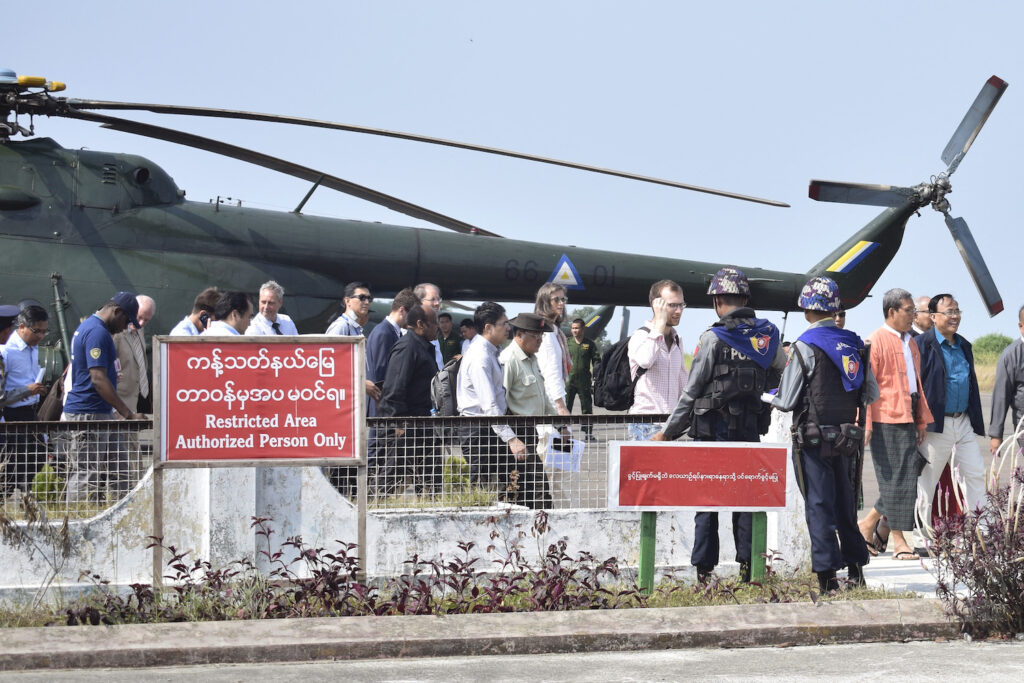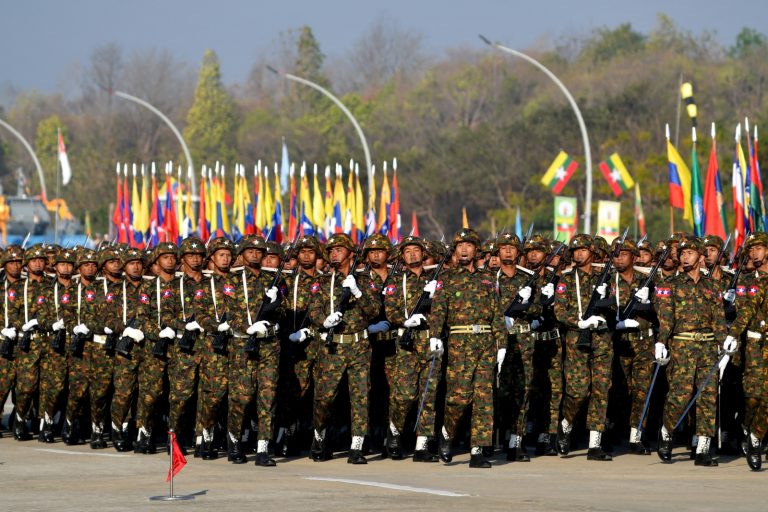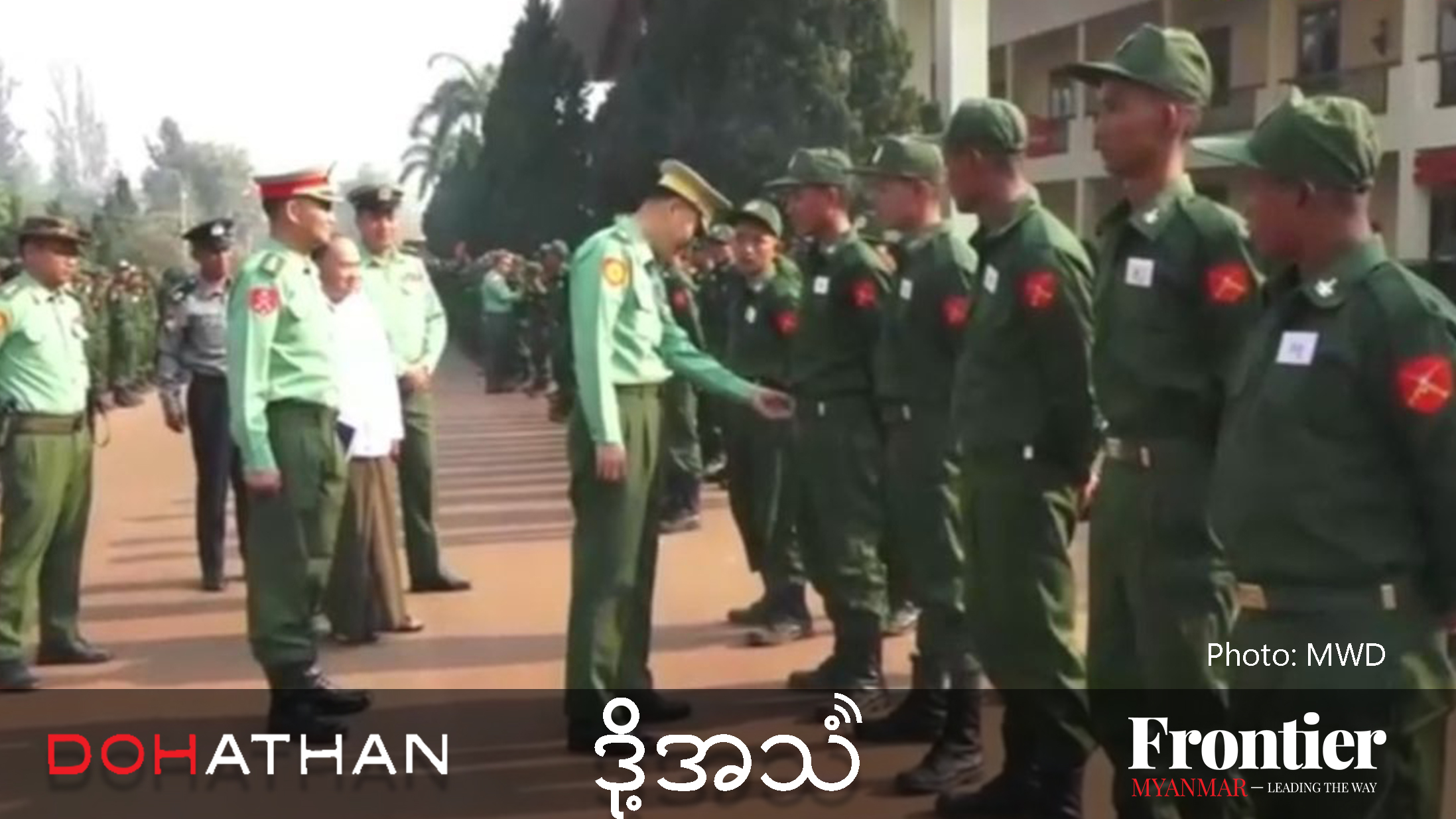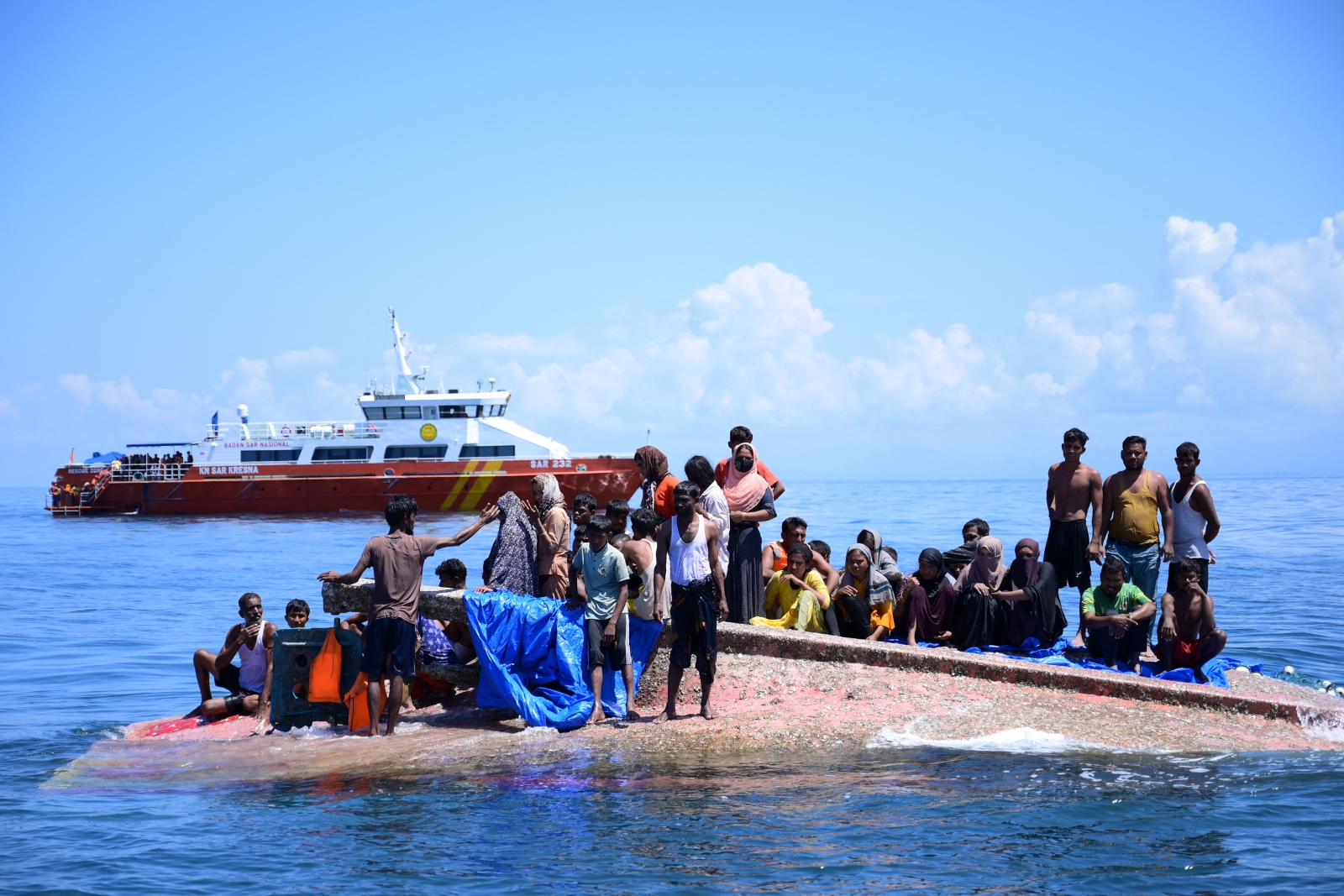OPINION
The United Nations has played into the military’s hands in Rakhine State, by acquiescing when the regime starved communities of aid and then restored humanitarian access to achieve its war aims.
By MATTHEW FRASER | FRONTIER
When its fragile ceasefire with the Arakan Army collapsed mid last year, the Myanmar military faced early and significant losses on the battlefield. In response, it targeted civilians with violence and some of the harshest restrictions in Rakhine State in decades, including on aid. Only when this extreme pressure on civilians over several months had driven the AA into another ceasefire did the military allow the United Nations and its partners some access to alleviate suffering. UN agencies active in the country were a passive tool in the military’s strategy, providing little resistance to its hostage-holding of civilians.
This manipulation of aid is worth examining closely, for the lessons it holds not just for humanitarian actors in Rakhine, but for anyone navigating Myanmar’s conflict zones in the aftermath of the 2021 military coup. This examination should start with the breakdown of a ceasefire between the AA and military that was agreed to in late 2020. This ceasefire turned Rakhine into a rare quiet spot amid the ensuing anti-coup protests and armed resistance, but it also allowed the AA to expand the parallel administrative structures under its political wing, the United League of Arakan, and reinforce its military positions.
The rapid consolidation of AA power unnerved the junta, which began arresting dozens of alleged AA affiliates in the first half of last year. Then from August 22, the AA launched new offensives against the military in northern Rakhine’s Maungdaw Township and southern Chin State’s Paletwa Township, spelling the end of the ceasefire.
The AA quickly took several key positions from the military, which retaliated by launching airstrikes and shelling civilians in the historic capital of Mrauk-U, far from the site of the offensives. By September 5, the UN Office for the Coordination of Humanitarian Affairs reported that 9,500 people had been newly displaced in Rakhine, joining some 75,000 people already displaced by fighting between 2018 and 2020, and approximately 140,000 Rohingya internally displaced in 2012.
The AA’s early gains illustrated its strength on the battlefield, against a military preoccupied with putting down resistance to its 2021 coup elsewhere in the country. With the objective of drawing the fighting with the AA to a quick close, the junta implemented extensive and perhaps unprecedented restrictions on civilians.
In early September the junta blocked medicine imports through the state’s land borders and banned shipments through central and northern Rakhine. Soldiers were posted outside Maungdaw General Hospital, preventing nurses from moving medicine without permission, while junta-employed health workers were prohibited from working in rural areas. The junta also suspended public boat transport through central and northern Rakhine. This gravely affected civilians, who rely upon these systems to access jobs and healthcare, as well as food and other imported goods.
The tit-for-tat continued when, in early September, the AA seized at least three more strategic camps, while occupying other camps as junta troops retreated. The junta responded by blocking all civilian movement through waterways in central and northern areas of the state – beyond just public transport.
Then in mid-September, the junta announced unprecedented bans on international humanitarian aid. Although aid agencies in Rakhine have long faced extensive restrictions, the new regulations blocked access to six entire townships. In November, it extended the humanitarian aid ban to two more townships.
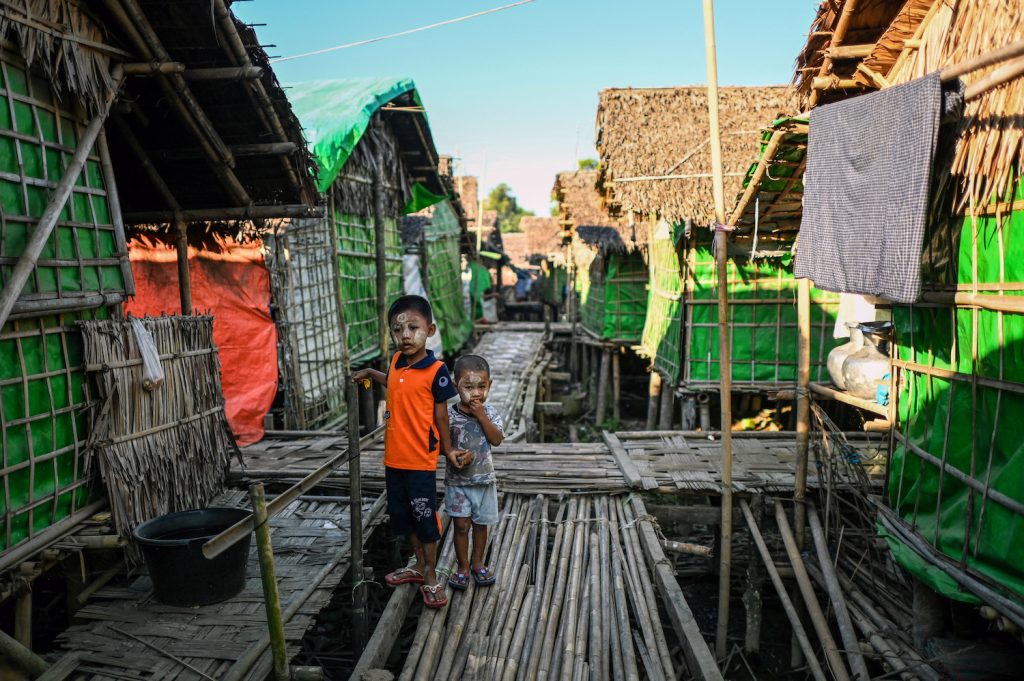
Raising the costs of war
Insurgent groups like the AA rely heavily on support from communities, without which they would flounder. Rakhine communities feel they have been neglected by the central Myanmar state for decades, and the AA’s promises of self-determination and restoring the former glory of their region have been very successful in winning popular support and legitimacy.
For the military, severing the links between communities and insurgent groups is a longstanding approach, designed to starve its opponents of resources, and to make the costs of supporting insurgency too high for communities to sustain. While this approach rarely results in the complete defeat of insurgent foes, whose legitimacy is based in part on opposition to the junta’s barbaric tactics, it has often allowed the military to weaken and contain insurgencies in Myanmar’s borderlands.
The new restrictions, however, were not enough to immediately weaken the AA, so the junta increasingly turned to violence against civilians. On September 23, it raided and burnt down houses in a village in Buthidaung Township, using the same indiscriminate violence it used against Rohingya civilians in 2017, and is now inflicting on civilians in central Myanmar. The shelling of urban areas – almost guaranteed to cause civilian casualties – increased in Minbya and Buthidaung townships in early October, while junta troops entered downtown Mrauk-U and villages in Kyauktaw Township, where they fired small arms unprovoked.
The junta also tightened its restrictions, erecting new roadblocks on highways and blockading remote villages. Meanwhile, those who continued operating boats for their livelihoods risked being arrested or having their vessels seized. The regime also increased arrests of anyone suspected of supporting the AA, including civil society leaders, monks, village administrators and businesspeople.
Yet the military remained under intense military pressure from the AA. The group not only retaliated against the restrictions by blocking military supply lines, but also illustrated its ability to operate across a wide region by launching several attacks in southern Rakhine, far from the main theatre of conflict.
In mid-October the junta dramatically escalated its atrocities against civilians. On October 17, junta shelling killed four civilians and injured at least another six. Six days later, three Rohingya men were injured, reportedly due to junta firing from drones, and on October 31 shelling killed three civilians. At the same time, the AA launched repeated attacks on the junta along the Bangladesh border.
The intense restrictions had become unbearable by November but had particularly dire implications with the onset of the rice harvest. The Rakhine Farmer’s Union estimated that nearly half of the paddy fields in Rakhine would be left unharvested due to the fighting, creating hardship and food insecurity that could last for years.
The situation appeared to reach a tipping point when, on November 10, the AA ambushed a military convoy in Ponnagyun, a short drive from the state capital Sittwe. Junta troops entered nearby Sin Inn Gyi village, where they massacred nine residents and set houses alight. Thousands fled their homes, and the military arrested civilians on suspicion of cooperation with the AA. Days later, the junta shelled civilian areas in Maungdaw, killing at least 10 people and reportedly wounding more than 30 others.

A reliable tool
On November 26, news broke that the AA and junta had agreed to a new truce, which the former called a “humanitarian pause”. Radio Free Asia reported that at least 45 civilians had been killed and over 100 injured due to the fighting since August, while the UN said more than 16,000 people had been displaced. This brought the total number of people displaced by the multi-year conflict between the AA and military to more than 89,000.
The junta has since slowly restored humanitarian access for the UN and its partners, although it remains piecemeal. The regime has also gradually loosened its restrictions on movement and trade, including imports of food and medicine, and allowed farmers to harvest their crops.
The junta’s restrictions on aid were part of a larger package designed to push the AA into a ceasefire by depriving civilians of access to food and livelihoods, while simultaneously killing or displacing civilians and destroying their property. This instrumentalisation of international aid is not new and is not unique to Rakhine. The junta blocks aid to communities in areas controlled by resistance forces in southeast Myanmar and elsewhere, while permitting its flow to communities deemed “loyal” to the regime.
The camps hosting displaced Rohingya in central Rakhine are perhaps the most egregious example of the military’s manipulation of aid. It has effectively locked Rohingya communities in these camps since 2012, stripping them of documentation and blocking their movement and access to basic healthcare, education and other rights, while counting on UN agencies and their partners to fill the gap year after year.
Similarly, this month UN has been in the spotlight for allowing boats from two UN agencies to be used by regime officials travelling from northern Rakhine to refugee camps in Bangladesh, in support of a pilot scheme to repatriate about 1,000 Rohingya. The UN has said its staff faced a “firm request” and had little choice but to lend out the boats, but this apparently violates the UN’s own policies on engaging the regime, as well as its public pronouncements that conditions in northern Rakhine do not allow for the sustainable return of refugees.
The UN has never acknowledged its routine manipulation by the military but has instead acted as a reliable tool. It has rarely even acknowledged that the military is the main barrier to aid operations. Its 2023 Humanitarian Response Plan, published in January, notes “access restrictions” last year without mentioning who was chiefly imposing them. Instead, it alleges “interference” by the AA, obscuring the reality that the military is not only the greatest cause of humanitarian need but also the greatest impediment to humanitarian access.
The UN is in a difficult position. Its mandate is to provide assistance and relieve suffering within a highly constrained environment. In the short term, responding to openings in access is entirely justifiable. But in the longer term, what is being done to break this pattern of manipulation, when continued cooperation and acquiescence will only embolden the junta and encourage them to target civilians?
The UN should start with a reckoning of how it has allowed itself to be instrumentalised year after year across the country without protest. Instead of vilifying resistance groups in its reports, it should consider which organisations have the popular legitimacy to govern, which are interested in alleviating suffering and developing their communities, and which are preoccupied with inflicting that suffering. By failing to reckon with its routine manipulation, the UN is simply facilitating the military’s oppression.
Matthew Fraser is the pen name of an independent analyst working on peace, conflict and the humanitarian response in Myanmar.


